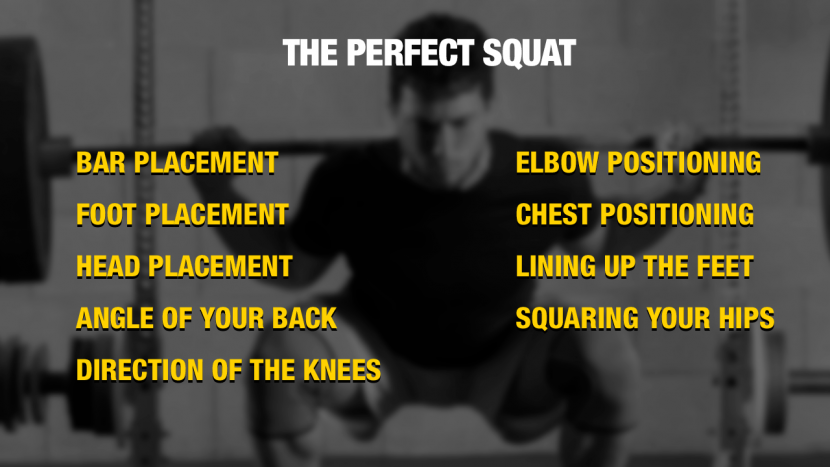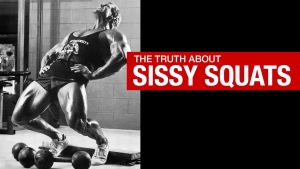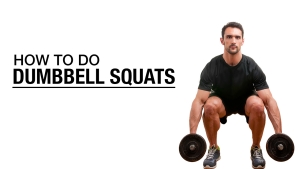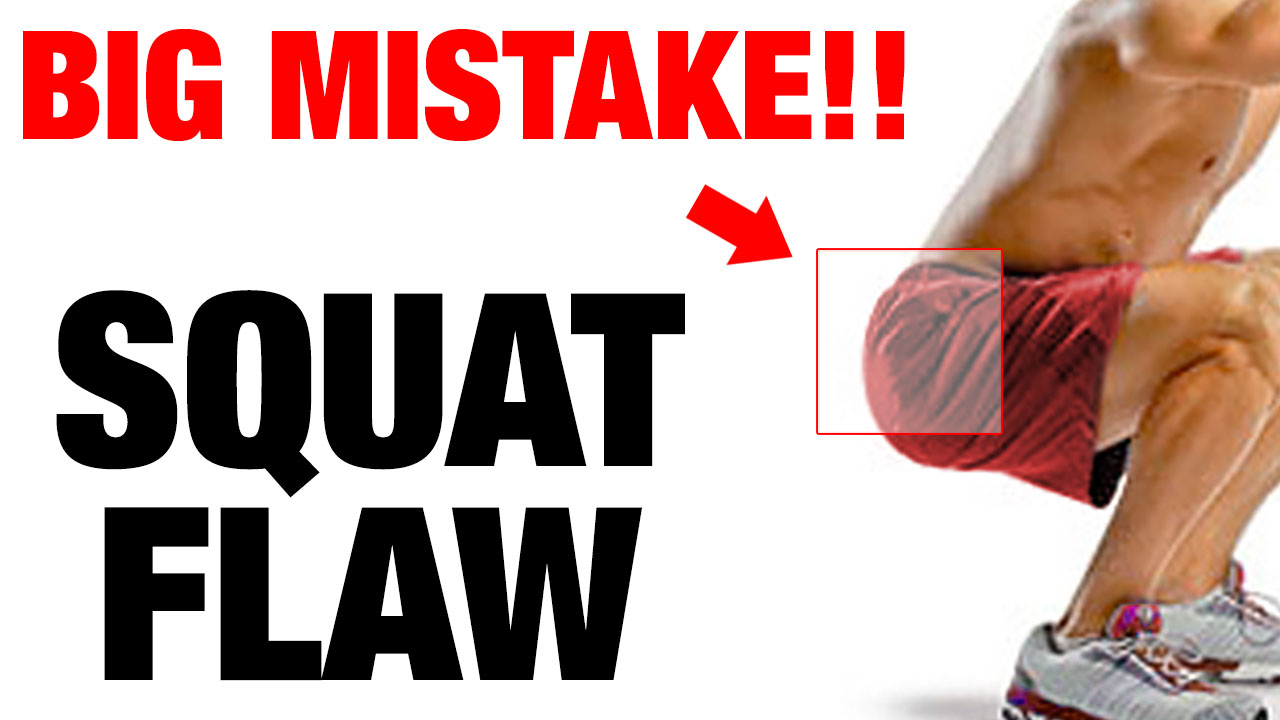
THINK YOUR SQUAT FORM IS ON POINT?
The squat seems easy enough, right?
I mean all you’re doing is putting your butt towards the ground, then standing back up. You do a squat movement every day when you’re sitting down to eat, taking a seat at work, or hitting up the restroom.
Sure, it’s a loaded question, but if traditional squats are so easy to do, why do so MANY people screw them up?
How is such a simple range of motion so damn technical?
I’ll tell you why: When it comes to proper form, the little things matter… A LOT!
And don’t get me started on all of the squat variations like split squats, goblet squat, and single-leg squat. Sure, form can be tricky, but the benefits of weighted squats far outweigh the potential negatives. It’s not like you should just stop doing regular squats, especially if your goal is bigger leg muscles.
Learning how to squat with proper form is one of the most fundamental places to start if you’re trying to make pain-free gains in your legs.
The squat is one of the best functional movements, which means it does more than just improve leg strength. It strengthens your joints, reduces your risk for injuries, and improves your hip hinge movement pattern.
Maybe most of you know the basic squat. You might even know the common mistakes to avoid.
BUT there’s a really good chance you are making the mistake I’m about to talk about.
And guys, listen up: This sneaky and common mistake is one that you MUST fix. This one squat flaw is the most subtle but it’s the one that can cause the most damage to your knees and back if you keep doing it!
HOW TO DO A PROPER SQUAT: THE BASICS
Let’s review how to perform one of the best functional exercises: basic weighted squats.
I’ll give you all the details of best squat technique. Then I’ll discuss the squat mistake that can do some serious damage to major muscles if not fixed.
Before you begin the barbell squat, make sure that the loaded barbell is at the right height on the squat rack. You shouldn’t need to go on your tippy toes to retrieve the bar.
Most importantly, skip the heavy squats for now to focus on form.
BAR PLACEMENT

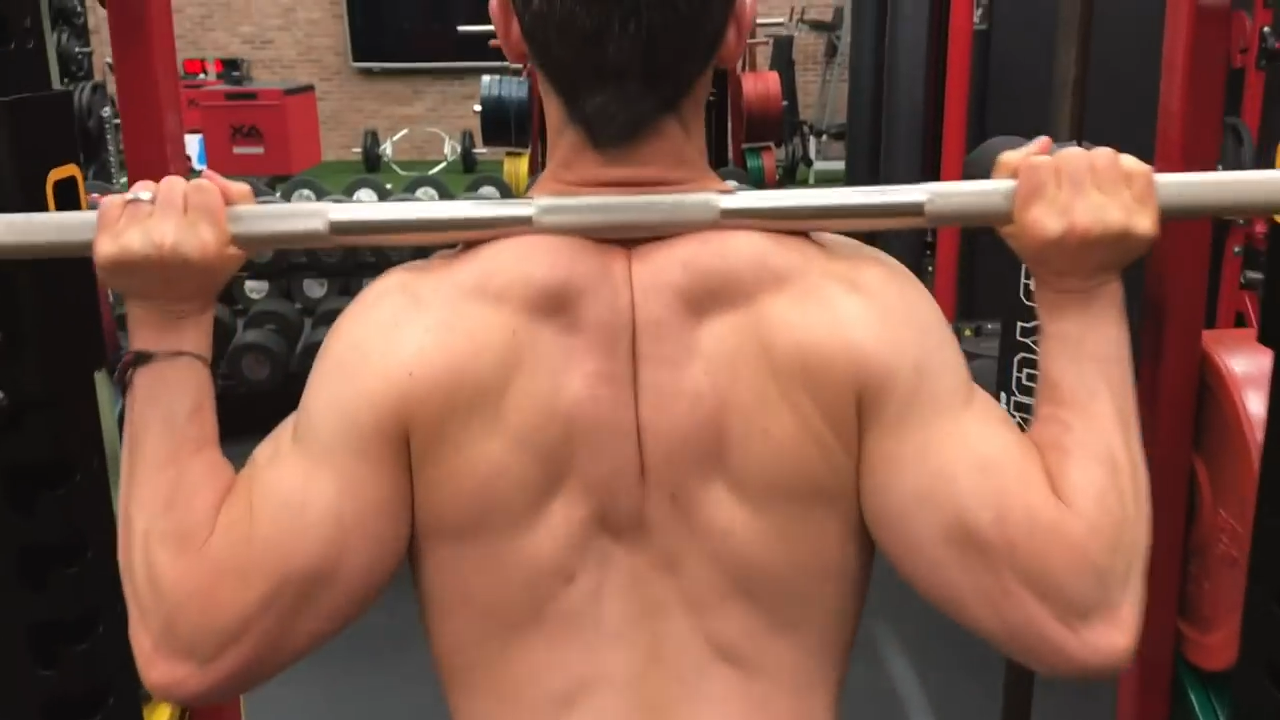
For bar position, the barbell should go across your upper trapezius muscles. Don’t lay it across your neck.
When you flex your upper traps, they create a nice shelf for the barbell to go (high-bar squats). Some people also place the bar on their rear deltoids or shoulder blades instead (low-bar squats).
FOOT PLACEMENT

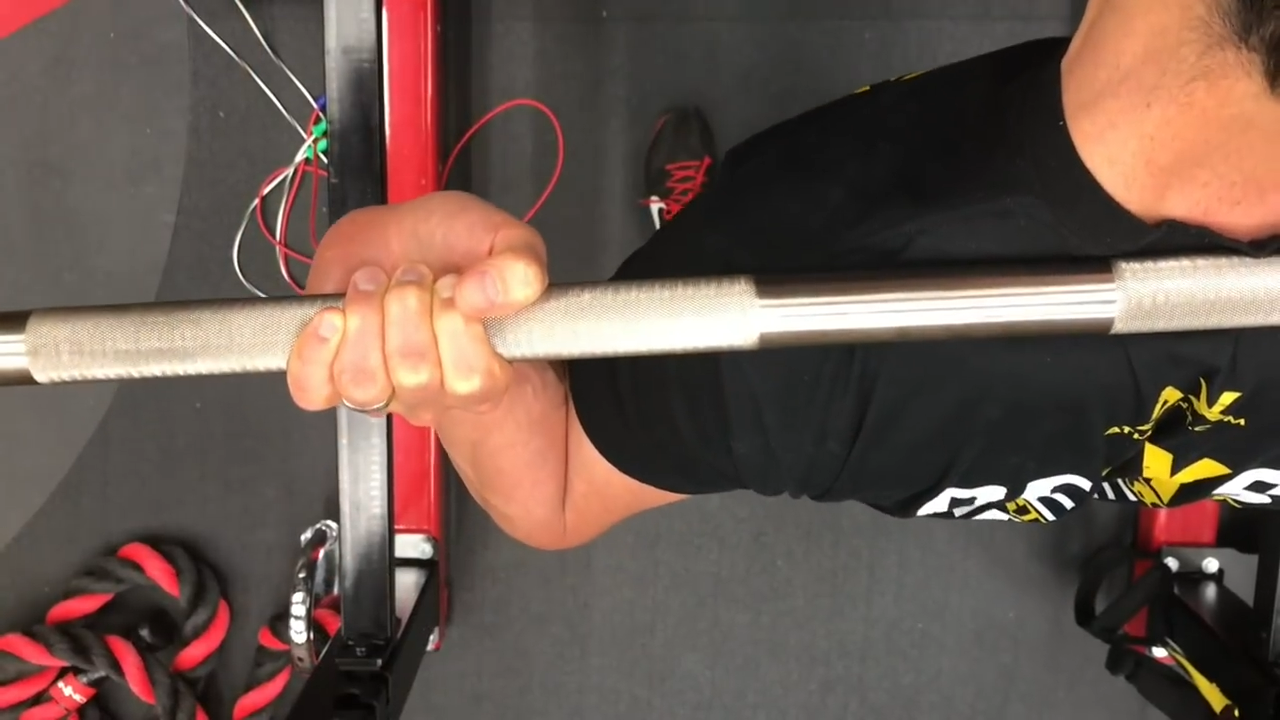
As you get into the starting position, step under the bar, and put your feet shoulder width wide stance. Make sure you keep your entire foot flat on the floor. Don’t let the heel or ball come up.
The barbell should also line up with the center of your foot.
If you have a stance that is posterior dominant, or where the loaded barbell is too far back, you’ll feel this right away.
It’ll feel like you’re being pulled backward, and that’s the last thing you want as you’re doing the traditional squat exercise.
HEAD PLACEMENT

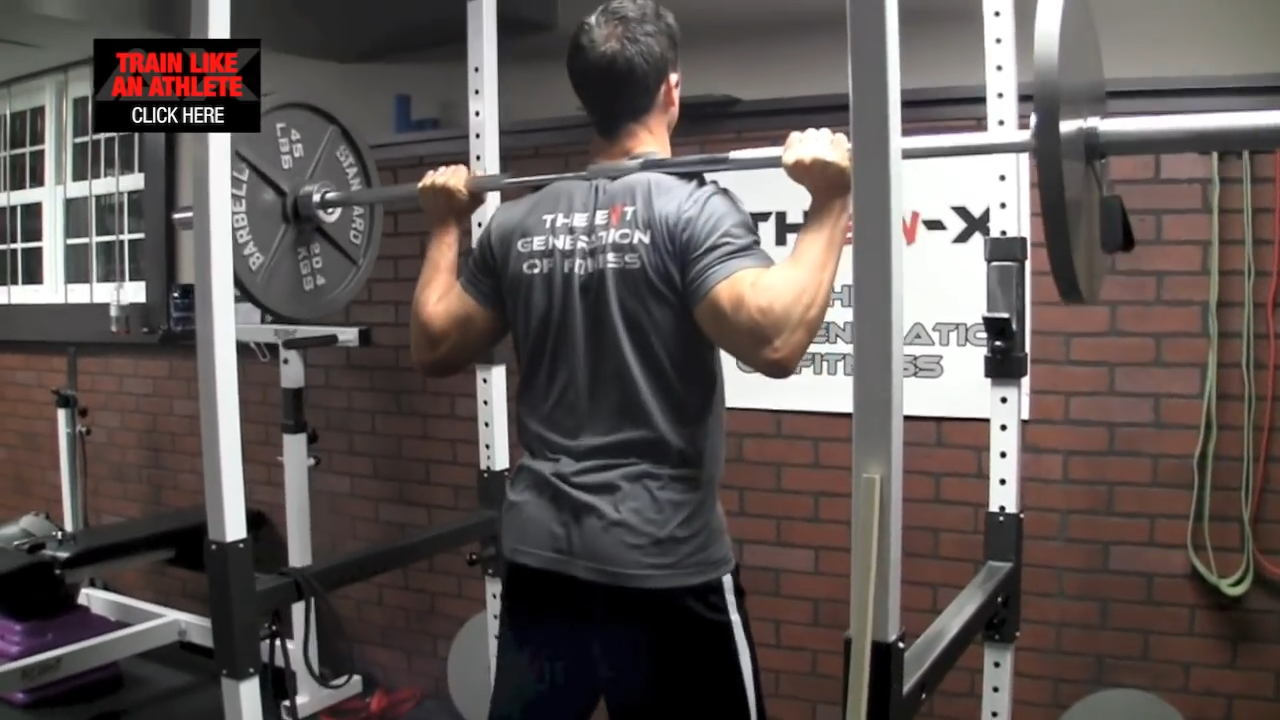
Proper squat form requires that you keep your head up. Not so much so that you’re staring at the ceiling. You also don’t want to be looking at the floor.
Focus on a neutral position, one where you can look straight ahead.
You’ll maintain this head placement throughout this compound exercise.
ANGLE OF YOUR BACK
Keep your back angled slightly forward but straight.
You should feel confident holding a barbell on your upper back muscles throughout the entire movement. You shouldn’t be worrying whether your back is arched or about to collapse.
DIRECTION OF THE KNEES

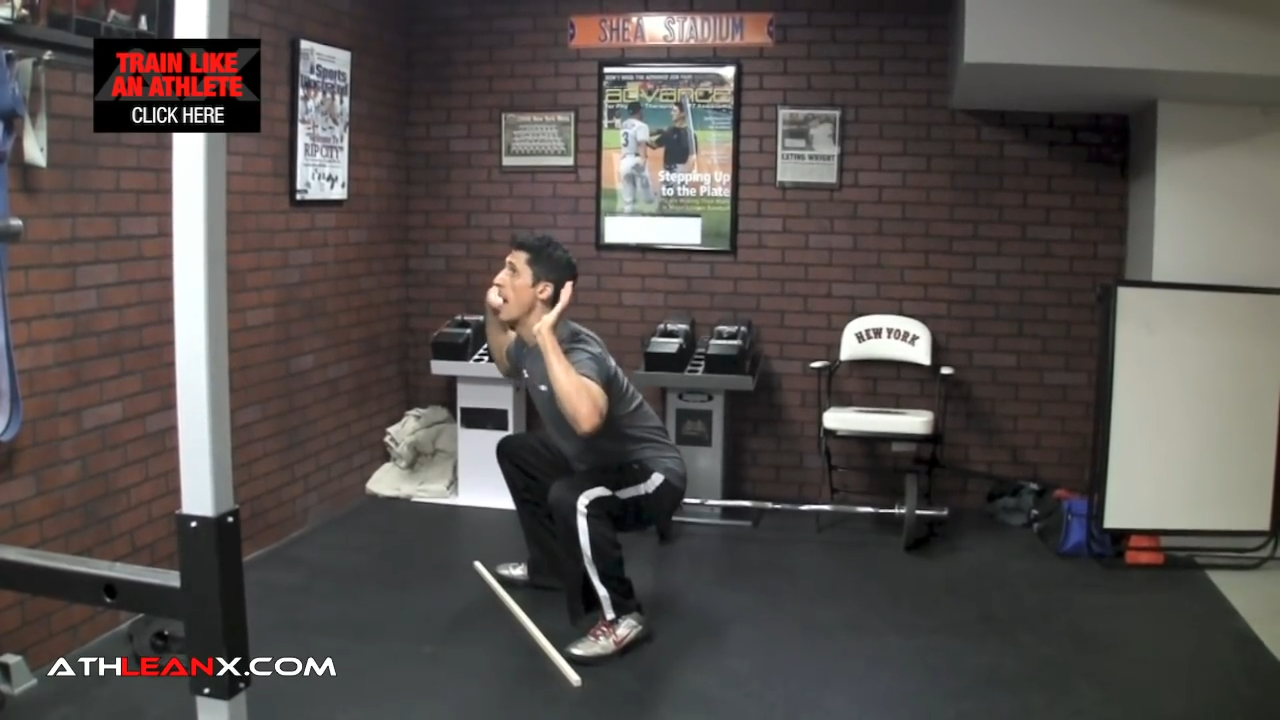
As you descend, your knees will go to or beyond 90-degree angles. Think about pushing the knees to the outside. Your knees should NEVER move inward toward one another.
If your knees cave inward, an easy fix is to perform regular squats with a resistance band looped just above the knee.
This will help to train the muscles and correct those muscle imbalances and weaknesses.
ELBOW POSITIONING

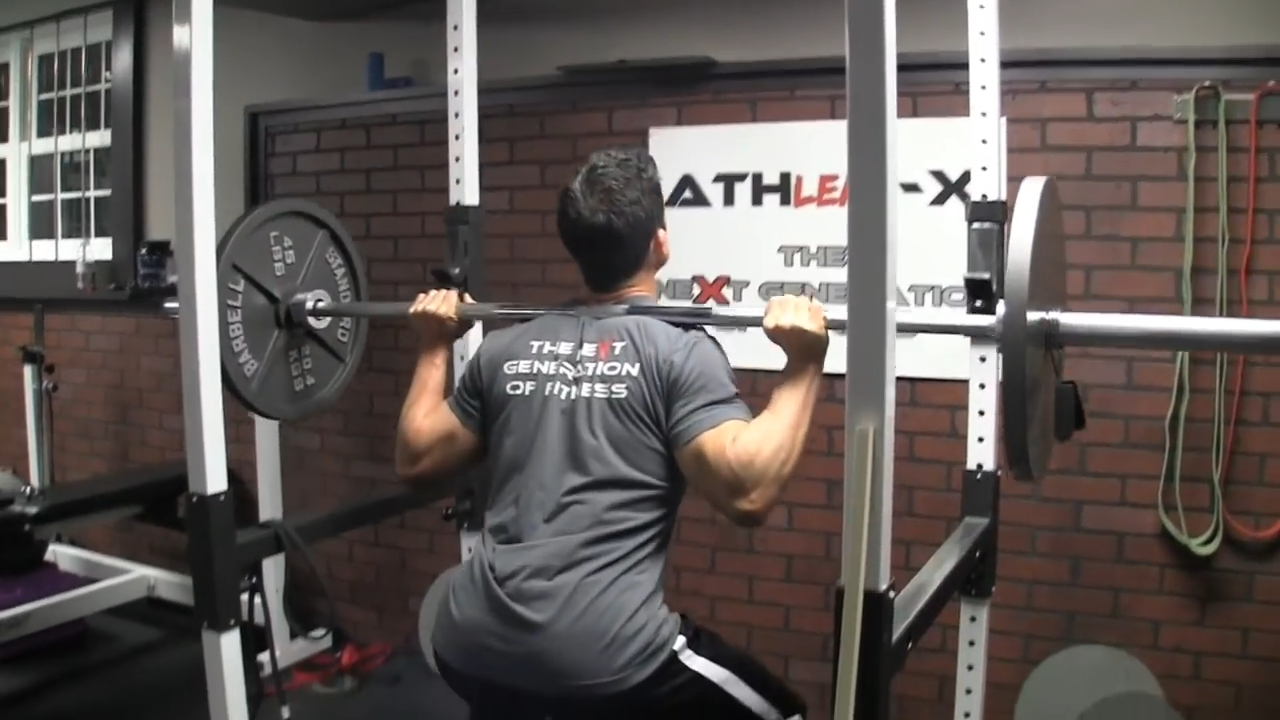
As for arm position, proper squat form requires you to keep your elbows tucked throughout the movement.
A nice bonus is that when the elbows are tucked, this help you engage the traps to form that shelf I discussed above.
CHEST POSITIONING

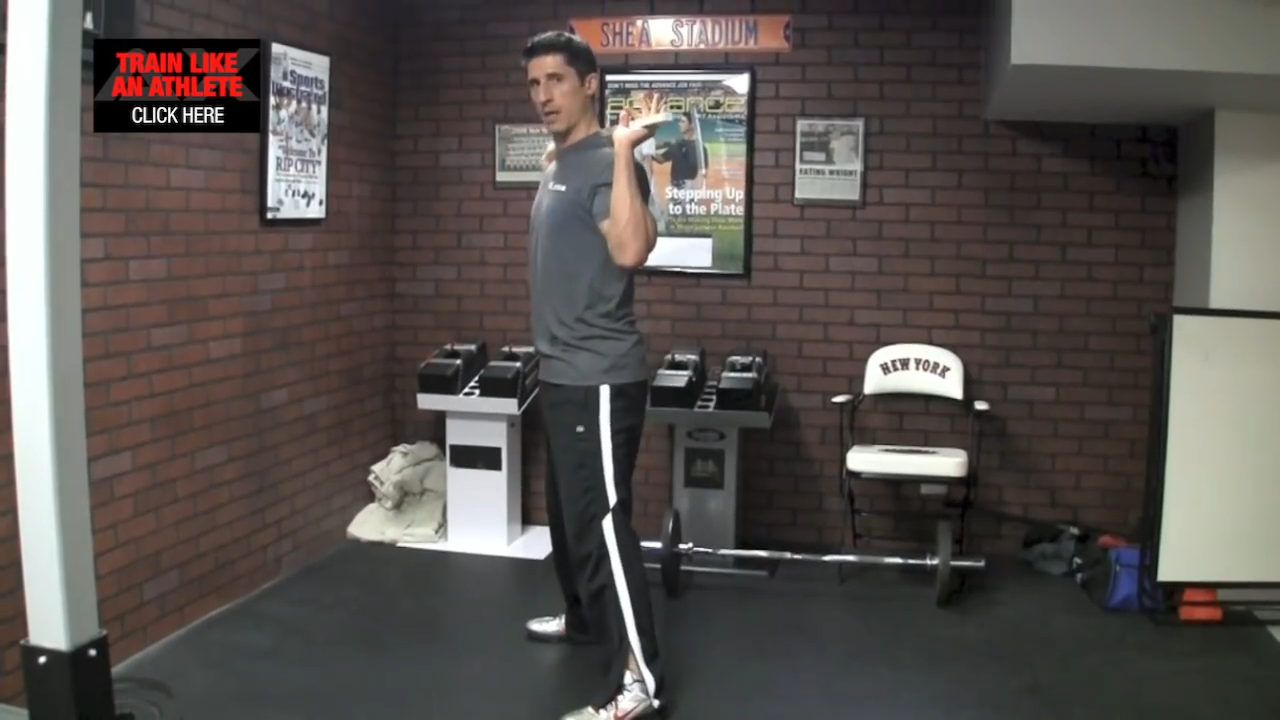
Think about a Superman stance with a strong upper body. The shoulders are back and, most importantly, the chest upright with a neutral spine.
If you’ve done everything else correctly, you’ll notice that your chest is already here; it’s sticking out.
LINING UP THE FEET

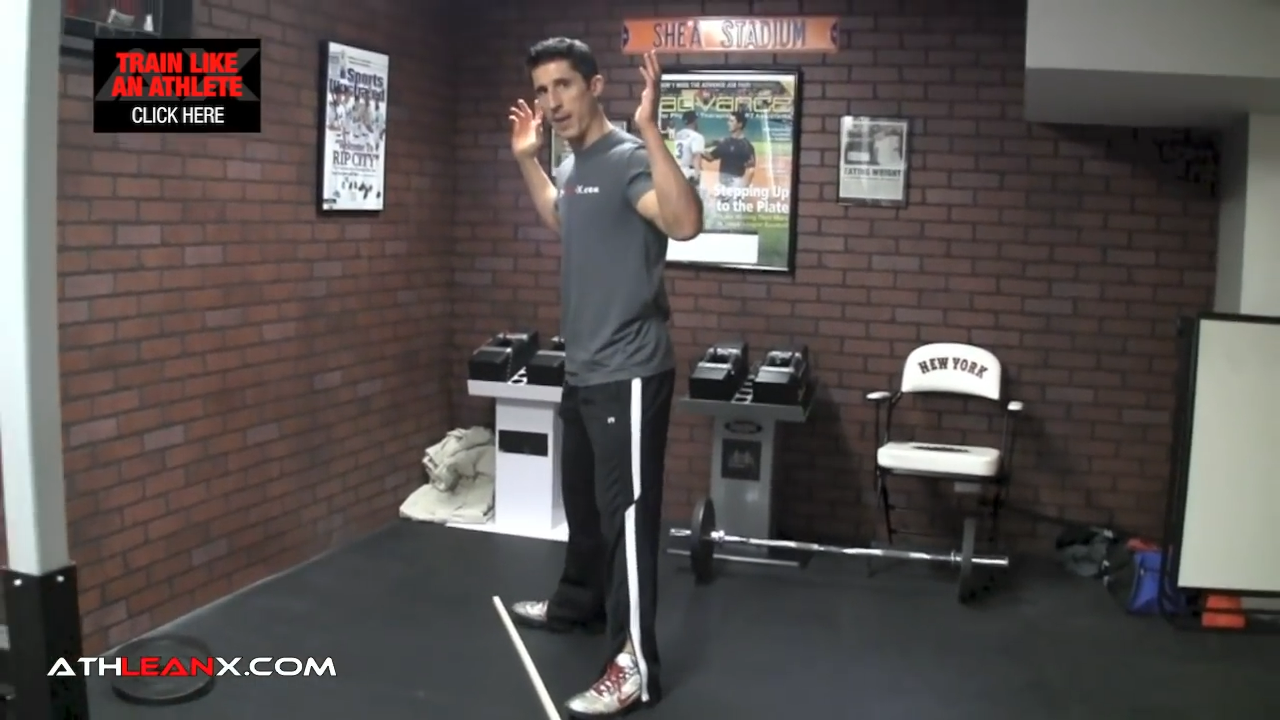
When you squat, your feet should be on a line with the toes pointed out.
Before you squat down with that barbell, you better make sure that you have square feet.
THE ONE MISTAKE YOU’RE PROBABLY MAKING
Now, even if you nail all of these squat position checkpoints, there’s still one thing that you could be doing dramatically wrong.
Don’t ever underestimate the role of hip movement in the squat.
You can still mistakenly allow your hip joints to open up.
When this squat stance error happens, it creates a rotational torsion on the pelvis.
Here’s the scary thing about this common exercise mistake: your feet won’t have to change position for you to open up your hip joints.
BIGGEST SQUAT MISTAKE: NOT SQUARING HIPS


This can lead you into a false sense of security where you think you’re performing the movement correctly but you’re not.
It might be very small in absolute motion, but this optimal position can lead to biomechanical changes in your conventional squat that can cause hip pain, knee pain, and back pain over time.
And here’s the thing: This is a very easy issue to develop because we’re all asymmetrical people.
Too many people have to sit all day and they develop muscle imbalances in their hip muscles. Others have an actual leg length imbalance that will cause something like this. But the torsion that’s going on here is a very common problem.
This is a bad position for your knee joint, especially if you count up all the reps of squats that you’re doing. And this also applies to deadlifts and other lower body exercises as well.
HOW TO MAKE SURE YOUR HIPS ARE SQUARED
So, you want to make sure that your hips are squared off just like your feet, chest, and shoulders for correct form and minimizing injury risk.
How do you do that if it’s already something that you can’t perceive?
Even worse, how can you correct this if it’s already something that your body has adapted to?
In order to fix this squatting mistake, you have to consciously contract your glutes before every repetition of the squat. These strong glutes will greatly improve your squat performance.
SQUEEZE YOUR GLUTES

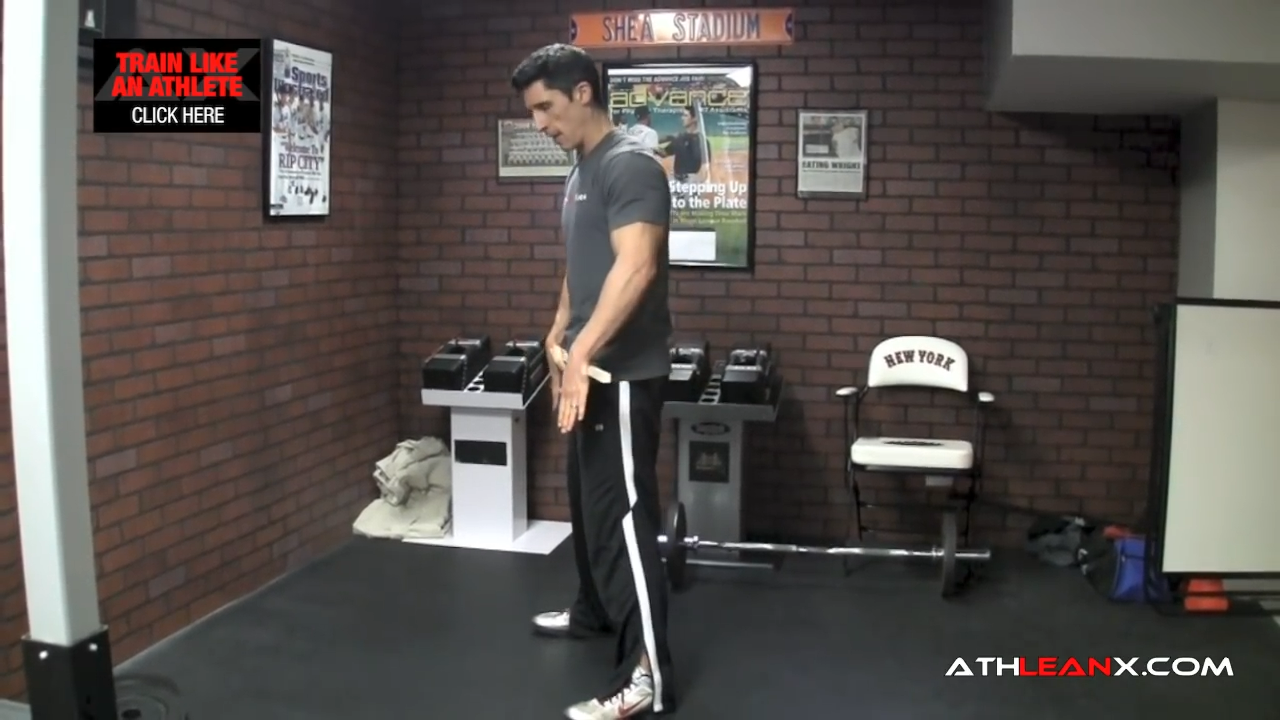
I squeeze my glutes together as tight as I possibly can, and that levels off the hips. This will correct the alignment of the pelvis and make sure that your hips are not left open prior to the descent. You can even try this with a regular bodyweight squat first.
A lot of guys will come up from a squat and kind of hang out, but they never achieve full extension. Go the extra mile, contract the glutes into full extension, and that’s going to set your hips properly so that everything’s in line.
If deadlifts are a part of your barbell lower-body workout, then you should already be used to this. The deadlift makes it easier for us squeeze the glutes and move into full extension.
Think about that squeeze at the end of a deadlift when doing your perfect squats. It takes just an extra second per rep but will pay large dividends to both your joint health as well as the gains you can see from your leg workouts.
One of the best ways to make sure you’re performing a squat correctly is to record yourself.
You can set up a camera or a phone, or have your buddy or a personal trainer record you so you can watch the downward motion and the movement pattern as a whole.
I recommend doing this every leg day, especially if you’re currently struggling with keeping your hips square. This will help to make sure your hip position and knee position are correct.
Stick to light weight and focus on proper form. Keep yourself safe by leaving the ego at home.
As a recap, here’s a quick list of steps for how to perform a proper squat:
HOW TO PERFORM THE BARBELL SQUAT:
- The initial starting position is in standing position with a somewhat narrow stance, feet about shoulder width apart, slight bend in the knees, bar resting in a power rack or on your shoulder muscles.
- From this squat position, take a deep breath, and prepare to grab the bar if you haven’t already. Head should be lifted in upright position and back angled slightly forward but straight. The entire foot should be in contact with the ground throughout the lift. Take a couple of steps away from the rack.
- As you begin to descend, knees should be pushed to the outside and elbows tucked in. Shoulder muscles should be back and chest upright. Toes should be pointed out. Keep a strong core (rectus abdominis) throughout the entire squat.
- Be sure to square the hips by squeezing the glutes together.
- Descend in one smooth movement and then press back up through the feet to the original position, using the muscle strength of the lower body.
Remember, when it comes to lifting and strength training, it’s the little things that matter. And this really hits home when we’re talking about the proper form of a squat.
Using this small correction in how you move your hip muscles, and not only will you correct some of these biomechanical flaws you have, but it’s going to allow you to lift more weight.
Guys, my focus is on putting the science back in strength training.
I want to make you stronger, more functional, and athletic. And if you guys want a complete weight training program to help you do that, check out my ATHLEAN-X programs to see which program is the best match for your fitness goals.

- The squat is one of the most important compound lifts you can do, but it’s also one of the most difficult lifts to get right.
- Even if you have perfect form, there’s one common squatting mistake that you’re probably still making: opening up your hips.
- When your hips are open, you are at a greater risk of injury, especially in the knees and lower back.
- To correct this, make sure to squeeze your glutes after every rep to reposition the hips.
- Record yourself performing squats from a side angle to make sure you’re achieving proper form and full extension.
- As you get stronger over time, you can continue to add additional weight to the barbell.
HOW TO DO A PROPER SQUAT FAQ
Most people think of squats as a leg exercise, but in fact this popular exercise is one of the most fundamental movements for the lower body muscles. When you perform a deep squat, it works the entire lower body posterior chain musculature including hamstrings, gluteal muscles and lower back. These are some of the biggest muscles in your body. The bar squat also works an additional range of muscles including your calf muscles, hip flexors, abdominal muscles (rectus abdominis) and adductor (groin).
Squat benefits include strengthening your lower body muscle, a stronger core, improves sports performance and athletic performance outcomes, and reduces the risk of injury. This is one of the best bodybuilding exercises that deserves a place in your training program.
The bar squat is staple exercise for building muscle mass and lower body strength. Barbell squats are the best types of squat because you can continue to use heavier weight for muscle hypertrophy as you get stronger. With a dumbbell squat, you are limited to lighter weight because of the difficulty of lifting two dumbbells versus the barbell.
To reap the full benefits of squats in your training routine, it's important to pay attention to all of the movement mechanics of this popular exercise. There are many places where bad form and lack of control can creep in, increasing your potential for injury. This is why paying attention to the nuances of the squat movement pattern is so important. When the squat motion is done correctly, the benefits of squats include improving leg strength and sports performance and athletic performance outcomes. This is one of the best bodybuilding exercises that deserves a place in your exercise program.
Here is how to do a barbell squat for beginners:
- Start with a loaded barbell in the squat rack. Begin in standing position below the barbell, with a somewhat narrow stance (shoulder-width stance).
- Grab the barbell and take a couple of steps away from the rack. Prepare to begin the lift with an upright torso, upper spine, thoracic spine and lower spine neutral, head neutral and lifted. Keep a solid standing position with the entire foot flat in contact with the ground. Keep strong core muscles throughout this compound movement.
- Take a deep inhale and begin to descend with knees pushed to the outside and elbows tucked in. Shoulder muscles should be back and chest upright during the entire squat movement. Toes should be pointed out. Square the hips by squeezing the glutes together.
- Descend in one smooth movement and then press back up through the feet to the starting position, using the strength of the lower body.
If a barbell without any weight plates feels too challenging to you, you can begin with a basic bodyweight squat or a dumbbell squat with lighter weights. If the weight feels ok, but it is difficult to perform a deep squat with a complete range of motion, you can improve your squat depth by starting with a partial squat (incomplete squat) and then practice a deeper squat by doing a box squat.
The bar squat is a great all-around exercise for the lower body muscles that should be part of your exercise program. Squatting is also a natural movement that the human body has been performing since the dawn of time.
To achieve muscle hypertrophy and progress to heavy weights, you can begin to add weight to your barbell squat sessions. Once you find that you can do your current weight for 12 squat repetitions without difficulty, you can begin to increase your weight 5-10 pounds at a time. At first this could mean 10-20% more weight than your previous max load, but as time goes on, you will increase by a lesser percentage of your current weight. You should plan to do 2-3 sets of squats 1-2 times per week.
If squats are done with bad form and lack of control they can cause potential injury and additional pain including hip pain, elbow pain, neck pain, shoulder pain and wrist pain. They can also compromise knee health including causing knee injuries.
This is why it's so important to learn proper technique and movement mechanics before you pick up a heavy load. This includes keeping an upright torso, spine neutral, neutral head position with head inline with the spine, hips square, knees pushed outward and maintain core stability and feet flat during the entire squat movement.
If you already have bad knees, be sure to check with a health professional before performing barbell squats. You may need to reduce the ranges of motion and do incomplete squats, rather than a squat with knee sleeves or a squat with knee wraps, which increase friction and are restrictive.
Done correctly, barbell squats are a vital exercise to include in your weight training program. They are a key strength exercise for building lower body strength, and can improve your technical performance in dynamic sports and athleticism.
REFERENCES

Jeff Cavaliere M.S.P.T, CSCS
Jeff Cavaliere is a Physical Therapist, Strength Coach and creator of the ATHLEAN-X Training Programs and ATHLEAN-Rx Supplements. He has a Masters in Physical Therapy (MSPT) and has worked as Head Physical Therapist for the New York Mets, as well as training many elite professional athletes in Major League Baseball, NFL, MMA and professional wrestling. His programs produce “next level” achievements in muscle size, strength and performance for professional athletes and anyone looking to build a muscular athletic physique.
















